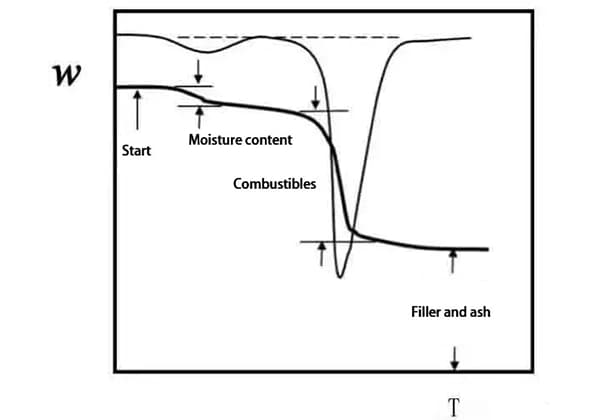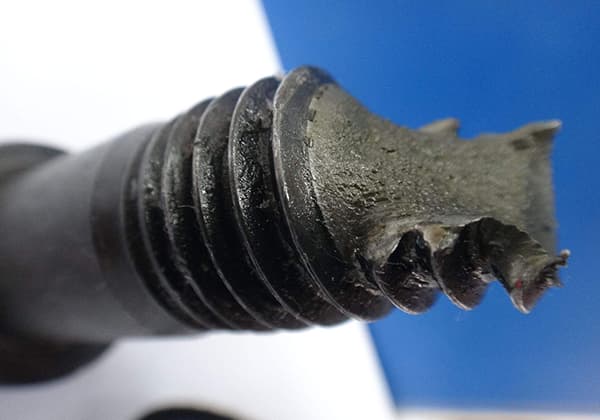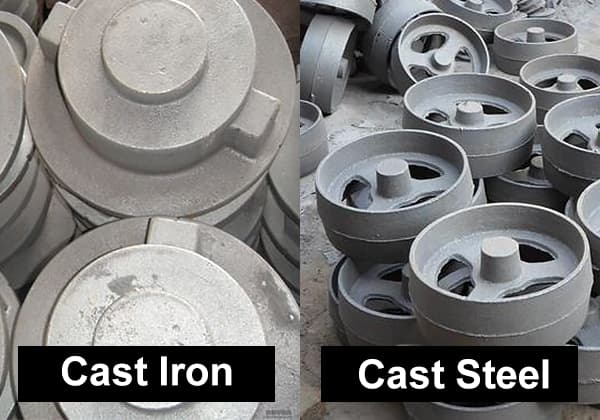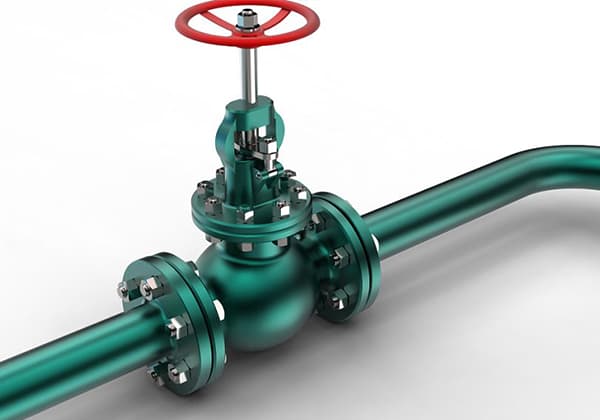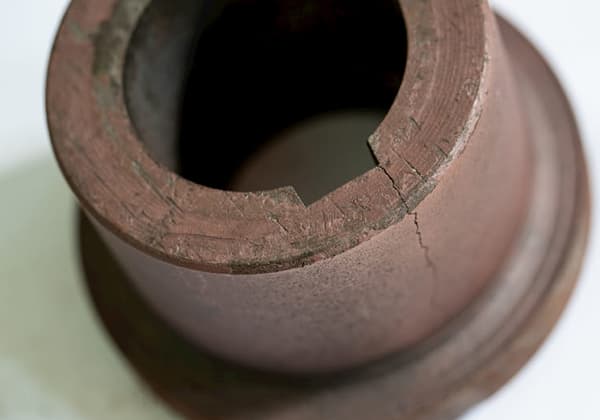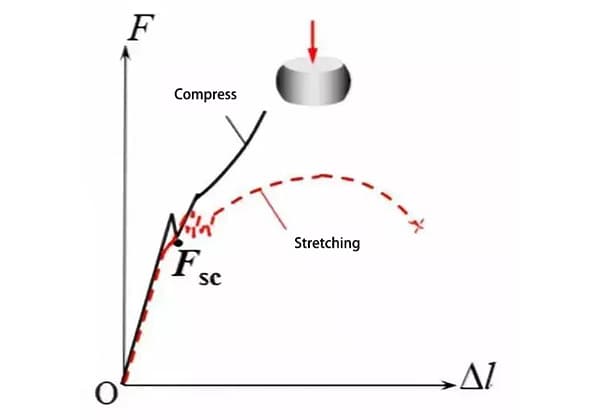
Ever wondered what keeps your car engine running smoothly? The answer lies in lubricating oils. These complex mixtures of hydrocarbons perform critical roles, from reducing friction to preventing rust. This article delves into their various physical and chemical properties, such as viscosity, flash point, and oxidation stability. Understanding these properties can help you choose the right oil to ensure optimal performance and longevity of machinery. Dive in to discover how these oils work and what makes them essential for industrial applications.
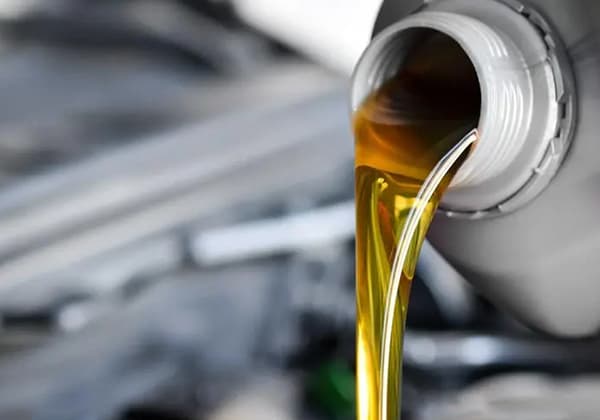
The Basic Performance of Lubricating Oil
Lubricating oil is a technologically advanced product, which is a complex mixture of hydrocarbons, and its true performance is the comprehensive effect of complex physical or chemical changes.
The basic performance of lubricating oil includes general physical and chemical properties, special physical and chemical properties, and bench test simulations.
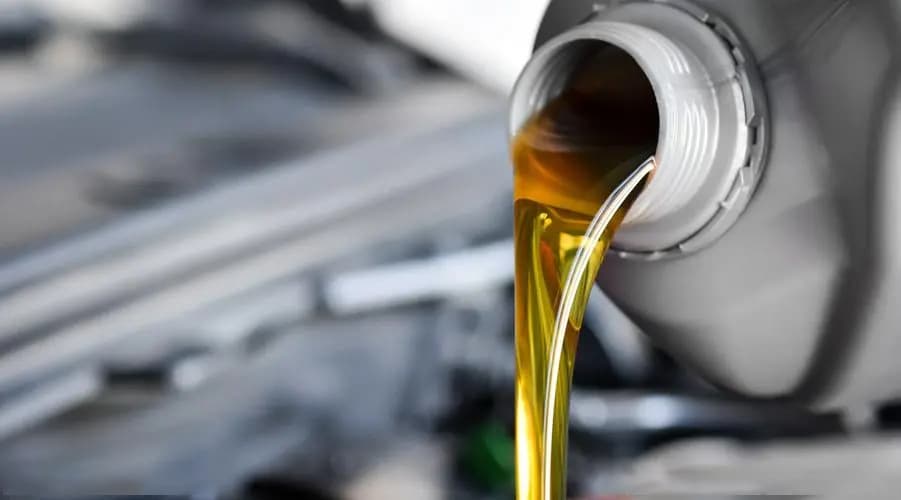
General Physical and Chemical Properties
Each type of lubricating grease has its common general physical and chemical properties, which indicate the inherent quality of the product.
The general physical and chemical properties of lubricating oil are as follows:
Appearance (color)
The color of the oil can often reflect its refining degree and stability.
For base oils, the higher the refining degree, the cleaner the hydrocarbon oxides and sulfides removal, and the lighter the color.
However, even under the same refining conditions, the color and transparency of base oils produced from different oil sources and base crude oils may be different.
For new finished lubricating oil, the color has lost its original meaning as an indicator of the refining degree of base oil due to the use of additives.
Density
Density is lubricating oil’s simplest and most commonly used physical property index. The density of lubricating oil increases with the increasing number of carbon, oxygen, and sulfur in its composition.
Therefore, under the same viscosity or the same relative molecular weight, lubricating oils with more aromatic hydrocarbons and more asphaltene and resin have the highest density, those with more cycloalkanes are in the middle, and those with more alkanes have the smallest density.
Viscosity
Viscosity reflects the internal friction of the oil and is an index that indicates the oiliness and fluidity of the oil.
Under the premise of not adding any functional additives, the higher the viscosity, the stronger the oil film strength and the poorer the fluidity.
Viscosity Index
Viscosity index represents the degree of change in viscosity of oil with temperature.
The higher the viscosity index, the less the viscosity of the oil is affected by temperature, and the better its viscosity-temperature performance.
Conversely, the lower the viscosity index, the worse the performance.
Flash Point
Flash point is an index that indicates the volatility of the oil. The lighter the fraction of the oil, the greater its volatility, and the lower its flash point.
Conversely, the heavier the fraction of the oil, the lower its volatility, and the higher its flash point.
Additionally, flash point is also an indicator of the fire hazard of petroleum products. The hazard level of the oil is divided based on its flash point, with flash points below 45℃ considered flammable and those above 45℃ considered combustible. It is strictly prohibited to heat the oil to its flash point temperature during storage and transportation.
In the case of the same viscosity, a higher flash point is better. Therefore, users should choose lubricating oil according to the usage temperature and working conditions. Generally, a flash point that is 20-30℃ higher than the usage temperature is considered safe for use.
Pour Point and Tilt Point
The pour point is the highest temperature at which the oil stops flowing under specified cooling conditions. The solidification of oil is different from the solidification of pure compounds.
Oil does not have a specific solidification temperature, and the so-called “solidification” only means that it has lost its fluidity as a whole, and not all components have turned into solids.
The pour point of lubricating oil is an important quality indicator that represents its low-temperature fluidity and is significant for production, transportation, and usage. Lubricating oil with a high pour point cannot be used at low temperatures.
Conversely, it is not necessary to use lubricating oil with a low pour point in areas with higher temperatures, as the lower the pour point of the oil, the higher the production cost, leading to unnecessary waste.
Generally, the pour point of lubricating oil should be 5-7℃ lower than the lowest temperature of the usage environment.
However, it is important to consider the pour point, low-temperature viscosity, and viscosity-temperature characteristics of the oil comprehensively when choosing a low-temperature lubricating oil.
This is because low-pour-point oils may not meet the requirements for low-temperature viscosity and viscosity-temperature characteristics.
Pour point and tilt point are both indicators of the low-temperature fluidity of oil, and there is no fundamental difference between them, except for slightly different measurement methods. The pour point and tilt point of the same oil are not completely equal, and in general, the tilt point is higher than the pour point by 2-3℃, but there are exceptions.
Acid Value, Alkaline Value, and Neutralization Value
Acid value is an indicator of the presence of acidic substances in lubricating oil, with a unit of mgKOH/g.
Acid value is divided into strong acid value and weak acid value, and the two combined make up the total acid value (TAN). Usually, what we call “acid value” actually refers to “total acid value (TAN)”.
Alkaline value is an indicator of the amount of alkaline substances in lubricating oil, with a unit of mgKOH/g.
Alkaline value is also divided into strong alkaline value and weak alkaline value, and the two combined make up the total alkaline value (TBN). Usually, what we call “alkaline value” actually refers to “total alkaline value (TBN)”.
Neutralization value actually includes both total acid value and total alkaline value. However, unless otherwise specified, what we generally call “neutralization value” actually only refers to “total acid value”, with a unit of mgKOH/g.
Water Content
Water content refers to the percentage of water in lubricating oil, usually expressed as a weight percentage.
The presence of water in lubricating oil can damage the oil film formed by the oil, resulting in a decrease in lubrication effectiveness, accelerate the corrosion of metals by organic acids, cause equipment to rust, and make the oil prone to produce sediment.
In general, the less water there is in lubricating oil, the better.
Mechanical Impurities
Mechanical impurities refer to the precipitates or gelatinous suspensions in lubricating oil that are insoluble in solvents such as gasoline, ethanol, and benzene.
Most of these impurities are sand, stone, iron filings, and some organic metal salts that are difficult to dissolve in solvents brought by additives.
Typically, the mechanical impurities in the base oil of lubricating oil are controlled to below 0.005% (mechanical impurities below 0.005% are considered to be nonexistent).
Ash Content and Sulfated Ash Content
Ash content refers to the non-combustible substance that remains after burning under specified conditions.
The composition of ash is generally considered to be some metal elements and their salts.
Ash content has different concepts for different types of oil. For base oil or oil without additives, ash content can be used to determine the degree of oil refinement.
For oil with added metal salt additives (new oil), ash content becomes a means of quantitatively controlling the amount of additives added. Sulfated ash content is used in place of ash content in foreign countries.
The method is to add a small amount of concentrated sulfuric acid to the oil sample before combustion and calcination to convert the metal elements of the additives into sulfate.
Residue
Residue refers to the black residue left after heating and combustion of oil under specified experimental conditions.
It is an important quality indicator of lubricating oil base oil and is used to determine the nature and refining depth of lubricating oil.
The amount of residue in lubricating oil base oil is related not only to its chemical composition but also to the degree of refining of the oil.
The main substances that form residue in lubricating oil are colloids, asphaltenes, and polycyclic aromatic hydrocarbons. These substances decompose and condense under conditions of inadequate air supply to form residue.
The deeper the refining of lubricating oil, the smaller the residue value. Generally speaking, the smaller the residue value of blank base oil, the better.
Nowadays, many oils contain additives such as metals, sulfur, phosphorus, and nitrogen, which have high residue values.
Therefore, the residue value of oils containing additives has lost its original meaning. Mechanical impurities, water content, ash content, and residue are all quality indicators that reflect the purity of oil and the degree of refining of lubricating base oil.
Special Physical and Chemical Properties
In addition to the above general physical and chemical properties, each type of lubricating oil should also have special physical and chemical properties that characterize its usage characteristics.
The higher the quality requirements or the stronger the specialization of the oil, the more prominent its special physical and chemical properties. Test methods that reflect these special physical and chemical properties are briefly described below:
Oxidation Stability
Oxidation stability indicates the anti-aging properties of lubricating oil. Some industrial lubricants with long service life require this indicator, making it a special performance requirement for these types of oils.
There are many methods for measuring the oxidation stability of oil.
Basically, a certain amount of oil is oxidized with air (or oxygen) and a metal catalyst at a certain temperature for a certain period of time.
Then, the oil’s acid value, viscosity changes, and precipitate formation are measured. All lubricating oils have different automatic oxidation tendencies depending on their chemical composition and external conditions.
As oxidation occurs during use, aldehydes, ketones, acids, colloids, asphaltenes, and other substances gradually form.
Oxidation stability is the ability to suppress the formation of substances that are harmful to the use of the oil.
Thermal Stability
Thermal stability refers to the ability of oil products to withstand high temperatures, that is, the resistance of lubricating oil to thermal decomposition, which is indicated by the thermal decomposition temperature.
Some high-quality anti-wear hydraulic oils, compressor oils, and other lubricants require high thermal stability.
The thermal stability of oil products mainly depends on the composition of the base oil, and many additives with low decomposition temperatures often have an adverse effect on the stability of oil products. Antioxidants cannot significantly improve the thermal stability of oil products.
Oiliness and Extreme Pressure (EP) Properties
Oiliness refers to the formation of a strong physical and chemical adsorption film of polar substances in lubricating oil on the metal surface in the friction zone, which plays a role in high-load resistance and anti-friction wear.
EP properties refer to the polar substances in lubricating oil in the friction zone undergoing frictional chemical reactions and decomposition under high temperature and high load, reacting with the surface metal to form a low-melting-point soft (or plastic) EP film, thereby providing lubrication resistance to impact, high load, and high temperature.
Corrosion and Rust Protection
Due to the oxidation of oil products or the action of additives, corrosion of steel and other non-ferrous metals often occurs.
The corrosion test generally involves placing a purple copper strip in oil and observing the changes in copper after being placed at 100°C for 3 hours. The rust protection test is carried out under the action of water and water vapor, and the surface of steel will produce rust.
The rust resistance is measured by adding 30ml of distilled water or artificial seawater to 300ml of test oil, placing a steel rod in it, stirring it at 54°C for 24 hours, and observing whether there is any rust on the steel rod.
Oil products should have anti-metal corrosion and rust protection properties. In industrial lubricating oil standards, these two items are usually mandatory test items.
Foam Resistance
Foam resistance refers to the ability of lubricating oil to resist foam formation under mechanical agitation or aeration.
Foam can cause problems in lubrication systems, such as reducing lubrication efficiency and causing cavitation erosion. The foam resistance of lubricating oil is usually measured by a standardized test method, and the test results are used to classify the foam resistance level of lubricating oil.
Hydrolytic Stability
Hydrolytic stability refers to the stability of oil products under the action of water and metals (mainly copper).
When the acid value of the oil product is high or when it contains additives that are easily decomposed into acidic substances upon contact with water, this indicator may not meet the requirements.
The measurement method involves adding a certain amount of water to the test oil, mixing and stirring it with a copper sheet at a certain temperature, and then measuring the acidity of the water layer and the weight loss of the copper sheet.
Emulsion Resistance
In industrial lubricating oil, it is often unavoidable to mix in some cooling water during use.
If the emulsion resistance of the lubricating oil is poor, it will form an emulsion with the mixed water, making it difficult for the water to be discharged from the bottom of the circulating oil tank, which may cause poor lubrication.
Therefore, emulsion resistance is an important physical and chemical property of industrial lubricating oil.
Generally, the oil product is vigorously stirred with 40ml of test oil and 40ml of distilled water at a certain temperature for a certain time, and then the time for the separation of the oil layer-water layer-emulsion layer into 40-37-3ml is observed.
For industrial gear oil, the test oil is mixed with water, stirred at a certain temperature and 6,000 rpm for 5 minutes, left for 5 hours, and then the volume of oil, water, and emulsion layer is measured.
Air Release Value
This is a requirement in hydraulic oil standards because, in hydraulic systems, if the air dissolved in the oil cannot be released in time, it will affect the accuracy and sensitivity of hydraulic transmission.
In severe cases, it may not meet the requirements of the hydraulic system. The measurement method for this property is similar to that of foam resistance, but it measures the time for the air (mist) dissolved in the oil to be released.
Rubber Sealability
Rubber seals are commonly used in hydraulic systems, and oil products in machinery inevitably come into contact with some seals.
Oil products with poor rubber sealability can cause rubber swelling, shrinkage, hardening, and cracking, affecting their sealing performance.
Therefore, oil products are required to have good adaptability to rubber. Hydraulic oil standards require a rubber sealability index, which is measured by the change of a certain size rubber ring after being immersed in oil for a certain period.
Shear Stability
Oil products with added viscosity improvers, during use, due to the mechanical shear, the high-molecular-weight polymers in the oil are sheared, resulting in a decrease in the viscosity of the oil, affecting normal lubrication.
Therefore, shear stability is a special physical and chemical property that must be measured for such oil products.
There are many methods for measuring shear stability, including ultrasonic shear method, nozzle shear method, Weksler pump shear method, and FZG gear machine shear method. These methods ultimately measure the rate of viscosity decrease in the oil.
Solubility
Solubility is usually represented by the aniline point. The solubility limits of composite additives in oils of different grades are different, and the limit value of low ash oil is larger than that of over-alkaline oil, and the limit value of single-grade oil is larger than that of multi-grade oil.
Volatility
The volatility of base oil is related to oil consumption, viscosity stability, and oxidation stability. These properties are particularly important for multi-grade oil and energy-saving oil.
Rust-proof Performance
This refers to the specific physicochemical properties that anti-rust grease should have. The test methods include the wet test, salt spray test, stacked plate test, water displacement test, as well as the blade box test and long-term storage test.
Electrical Performance
Electrical performance is a unique property of insulating oil, mainly including the dielectric loss angle, dielectric constant, breakdown voltage, and pulse voltage.
The degree of refining, impurities, and water content of the base oil all have a significant impact on the electrical performance of the oil.
Special Physicochemical Properties of Lubricating Grease
In addition to the general physicochemical properties, special-purpose grease has its own unique physicochemical properties.
For example, lubricating grease with good water resistance requires a water resistance test; low-temperature grease requires a low-temperature torque test; multi-purpose grease requires extreme pressure wear resistance and rust prevention tests; long-life grease requires bearing life tests, and so on.
There are corresponding test methods for the determination of these properties.
Other Special Physicochemical Properties
In addition to the general properties, each type of oil should have its unique special properties.
For example, quenching oil requires cooling rate determination; emulsified oil requires emulsification stability determination; hydraulic guide rail oil requires anti-skid coefficient determination; spray lubricating oil requires oil mist diffusivity determination; refrigeration oil requires pour point determination; low-temperature gear oil requires cold cranking simulator test, etc.
These properties require a special chemical composition of the base oil or the addition of certain special additives to ensure them.
Notes on the Use of Lubricating Oil:
Oil Storage:
Do not store the oil upright in outdoor environments to prevent contamination from water and debris.
The oil can be stored upright indoors with the top facing up for easy extraction.
Tighten the sealing cap to maintain the seal of the oil drum.
Keep the surface of the drum clean and clearly labeled.
Keep the floor clean to facilitate the timely discovery of oil spills.
Record the inventory and use the first-in-first-out method.
For frequently used oil, use a switch to control the flow from an oil barrel rack.
Keep new oil separate from waste oil, and do not use a container that has contained waste oil to hold new oil to prevent contamination.
Oil Safety:
Store oil separately and do not place flammable materials around it.
No smoking and no open flames are allowed in the oil storage area.
Equip with at least two fire extinguishers.
Do not pile up oil rags or cleaning oil after wiping the machinery to prevent combustion.
Store flammable specialty oils or chemical solvents separately and mark them with a flammable label.
Usage Precautions:
Consult a lubrication expert and use lubricants of appropriate specifications, minimizing the number of types of oils used.
Indicate the parts that need to be oiled, the name of the oil, the oiling cycle, etc. with simple diagrams for each machine and assign a responsible person to avoid using the wrong type of oil.
Clean and wipe the oil suction pump, oil pot, and other containers and tools before adding oil each time.
Use dedicated containers for each type of oil and label them with the name of the oil to prevent contamination.
Before changing oil, wash the machinery with solvents and do not use water-soluble cleaning agents.
Make a record of machinery maintenance after each addition or replacement of lubricating oil.
If abnormal oil conditions are found or the oil has reached the oil change cycle, samples should be taken and sent to a professional company for chemical testing.
Environmental Protection and Health:
Do not directly discharge waste oil into the sewer or soil to avoid polluting the environment.
Collect waste oil and waste liquids in dedicated barrels and then hand them over to government-permitted recyclers. Do not dump them indiscriminately.
People with skin allergies or abrasions should avoid direct contact with lubricating oil.
Do not wear clothes stained with oil or put oil-stained rags in a bag.
Do not use dirty rags to wipe oil off the skin to avoid metal fragments in the rags scratching the skin and causing infection.
Glossary of Technical Terms
Abrasive Wear: Mechanical wear caused by relative sliding of two contacting surfaces.
Additive: A small amount of material added to improve lubricating properties.
Adhesion Improver: An additive added to oil and grease to improve adhesion (e.g. polyisobutene).
Adhesive Lubricant: A lubricant with an adhesion improver added to prevent the lubricant from being flung off due to centrifugal force.
Anti-Friction (AF) Coating, Anti-Wear (AW) Coating: Dry film solid lubricants that are widely used, including room temperature curing and heat curing types.
The formula contains solid lubricating materials (called “raw materials”) and binder materials. See “binder”.
Anti-Aging: Material aging caused by oxidation, overheating, or the presence of certain metals (such as copper, lead, silver, etc.), which can be improved by adding certain additives (such as antioxidants).
ASTM: American Society for Testing and Materials.
Base Oil: Basic component of lubricating oil and grease.
Binder: A non-volatile medium or shaping agent used to enhance the binding strength between particles of solid lubricant or the adhesion degree between a solid lubricant film and a friction surface.
Breakaway Torque: The torque required to break a bolt connection.
Chemical Inertness: (lubricant) and some substances do not react chemically.
Coefficient of Friction: The ratio of the frictional force between two contacting surfaces to the normal force.
Low-Temperature Performance: Indicated by the cloud point, pour point, and solidification point for lubricating oil, and by Kesternich flow pressure and low-temperature torque tests for lubricating grease.
Colloid: A stable liquid suspension of particles (particle size 10^-5~10^-7cm) as a solute (no particle sedimentation).
Complex Grease: A lubricating grease made from metal soap and various acids as thickeners, particularly suitable for high temperature and long-term use.
Consistency: A parameter of lubricating grease, divided into unworked penetration and worked penetration, measured according to the NLGI (National Lubricating Grease Institute) standard. Consistency is simply classified into nine grades, such as:
| Consistency level | Work taper (1/10mm) |
| 00 | #: 400-430 |
| 0 | #: 350-385 |
| 1 | #: 310-340 |
| 2 | #: 265-295 |
Density: the mass (in g) of lubricant per unit volume (in cm3) at 20°C.
Cleaner: a surfactant that is used to remove residual and sedimentary materials from surfaces.
Dispersion: the ability of a liquid to disperse insoluble substances.
DN value: a reference value for the grease used in rolling bearings that is calculated by multiplying the bearing diameter (in mm) by the rotational speed (in revolutions per minute).
Drop point: the temperature at which a lubricating grease changes from a semisolid to a liquid state, and is an indication of the heat resistance of the grease.
Dynamic viscosity: also known as absolute viscosity, this property reflects the internal resistance between fluid molecules when the lubricating oil is flowing through a pipe or gap.
EP (extreme pressure) additive: a chemical substance that improves the ability of the lubricant to withstand heavy loads and high temperatures, thus enhancing the wear resistance of oils and greases.
Emcor test: a corrosion resistance test for water-resistant greases that involves running at least two bearings lubricated with grease in water for about a week, with a corrosion resistance value ranging from 0 to 5 (0 indicating no corrosion and 5 indicating severe corrosion).
Ester oil: a compound of acid and alcohol used as a lubricant material and for the production of lubricating greases.
Flash point: the lowest temperature at which a mixture of oil vapor and air can ignite when exposed to a flame.
Fluorosilicone oil: a silicone oil that contains fluorine atoms in its molecular structure.
Fretting wear: a type of mechanical-chemical wear caused by micro-motion between two contact surfaces, resulting in pitting and the accumulation of oxides on the friction surface.
Friction: a resistance to tangential motion that occurs when two objects move relative to each other at their contact interface.
Grease: a lubricating medium composed of base oil and a thickener.
Inhibitor: an additive used in lubricants to delay aging and corrosion.
Pour point: the highest temperature at which an oil sample does not move under specified test conditions, expressed in degrees Celsius.
Tilt point: the lowest temperature at which an oil sample can flow under specified test conditions, expressed in degrees Celsius. It is a standard indicator used to measure the low-temperature fluidity of lubricating oils and is generally slightly higher than the pour point.
Prospects for the Development of Lubricants
In the next 10 years, the demand for lubricants in the Asia-Pacific region will reach 15.5 million tons, with China accounting for 40% of the regional demand.
By 2020, the demand for lubricants in the Chinese market will double, and consumption may surpass that of the United States.
The rapid growth in demand for automotive oil and the trend towards high-end automotive oil will drive the lubricant industry into a period of rapid development.
As the demand for automotive lubricants continues to rise year by year, the quality of lubricants will also achieve a breakthrough, with high-end lubricants directly aligning with international standards.
Does high viscosity lubricant indicate good quality?
Generally, when the operating speed of the parts is high, the load on the surface of the parts may be smaller, and the viscosity of the corresponding lubricant is lower (e.g. spindle oil).
Conversely, the viscosity of the corresponding lubricant will be higher (e.g. gear oil). Of course, the selection of lubricants should ultimately follow the supplier’s requirements for lubricant selection.
However, the quality of lubricants includes many indicators besides viscosity, so viscosity alone cannot be used to evaluate the quality of lubricants.
Lubricating Oil
Lubricating oil, also known as lubricating grease, is a non-volatile oily lubricant typically derived from petroleum or extracted from animal and plant oils.
There are three main types of lubricating oil based on their source: animal and plant oil, petroleum lubricating oil, and synthetic lubricating oil.
Petroleum lubricating oil accounts for more than 97% of the total consumption, so lubricating oil often refers to petroleum lubricating oil.
It is mainly used to reduce friction between moving parts and has other functions such as cooling, sealing, anticorrosion, rust prevention, insulation, power transmission, and impurity removal in machine equipment.
The lubricating oil is produced by using lubricating oil fractions and residue fractions from crude oil distillation units as raw materials, and then subjected to processes such as solvent deasphalting, solvent dewaxing, solvent refining, hydrogen refining or acid-base refining, bleaching, etc., to remove or reduce components such as substances that form free carbon, substances with low viscosity index, substances with poor oxidation stability, paraffin, and chemical substances that affect the color of the finished product.
The qualified lubricating oil base oil is obtained, and after blending and adding additives, it becomes a lubricating oil product.
The main performance of lubricating oil is viscosity, oxidation stability, and lubricity, which are closely related to the composition of lubricating oil fractions. Viscosity is an important quality indicator reflecting the fluidity of lubricating oil.
Different usage conditions have different viscosity requirements. High viscosity lubricating oil should be selected for machinery with heavy loads and low speeds.
Oxidation stability indicates the ability of oil products to resist oxidation in the usage environment due to temperature, oxygen in the air, and metal catalysis.
After oxidation, the oil product will generate carbon-like substances mainly composed of small asphaltene, viscous lacquer-like substances or film, or viscous water-containing substances according to the usage conditions, thereby reducing or losing its usability.
Lubricity indicates the anti-wear performance of the lubricating oil.
Functions of Lubricating Oil
Lubricating oil is a liquid lubricant used on various types of machinery to reduce friction, protect machinery and workpieces, and mainly serves lubrication, cooling, rust prevention, cleaning, sealing, and buffering.
Lubricating oil accounts for 85% of all lubricants, and there are many types and grades. The annual global usage is about 38 million tons. The general requirements for lubricating oil are:
(1) Anti-friction and anti-wear, reducing friction resistance to save energy, reducing wear to extend mechanical life, and improving economic efficiency;
(2) Cooling, requiring friction heat to be discharged from the machine at any time;
(3) Sealing, requiring leak prevention, dust prevention, and preventing gas leakage;
(4) Anticorrosion and rust prevention, requiring the protection of the friction surface from oil deterioration or external corrosion;
(5) Clean flushing, requiring the removal of dirt from the friction area;
(6) Stress dispersion and buffering, dispersing loads, buffering and reducing impact and shock;
(7) Kinetic energy transmission, such as hydraulic systems, remote control motors, and continuously variable transmissions.
Composition of Lubricating Oil
Lubricating oil generally consists of two parts: base oil and additives. The base oil is the main component of lubricating oil, determining its basic properties.
Additives can compensate for and improve the performance deficiencies of the base oil, endow some new properties, and are an important component of lubricating oil.
Storage of Lubricating Oil
Barrel and can lubricating oil should be stored in warehouses as much as possible to avoid the impact of climate.
Opened barrels of lubricating oil must be stored inside the warehouse. Oil barrels should be laid horizontally, and both ends of the barrel should be wedged with wooden wedges to prevent rolling.
In addition, the oil barrels should be checked regularly for leaks and whether the markings on the barrel surface are clear.
If the barrel must be stored vertically, it is recommended to invert the barrel so that the barrel lid is facing downwards, or tilt the barrel slightly to prevent rainwater from accumulating on the barrel surface and flooding the lid. Water has adverse effects on any lubricating oil.
Superficially, it may seem that water cannot penetrate the intact barrel lid and enter the oil barrel, but barrels of oil stored outdoors are exposed to intense sunlight during the day and cooler weather at night.
This thermal expansion and contraction can affect the air pressure inside the barrel.
During the day, the air pressure inside the barrel is slightly higher than atmospheric pressure, while at night, it approaches a vacuum.
This change in pressure between day and night can cause a “breathing” effect. Some of the air inside the barrel is “breathed out” during the day, and air is “breathed in” at night.
If the barrel lid is immersed in water, then water will inevitably enter the barrel with the air, and over time, the amount of water mixed in the oil will be considerable.
When taking out the oil, the oil barrel should be laid horizontally on a wooden stand with an appropriate height, a tap should be installed at the lid of the barrel for oil discharge, and a container should be placed under the tap to prevent dripping.
Alternatively, the oil barrel can be placed vertically, and a hand-operated pump can be used to extract the oil through a pipe inserted into the barrel lid.
Bulk oil stored in oil tanks is inevitably contaminated with condensed water and impurities, which eventually accumulate at the bottom of the tank, forming a layer of sludge-like material, which contaminates the lubricating oil.
Therefore, the tank bottom should be designed to be concave or sloped, and a drainage plug should be installed for timely discharge of residue. Within a possible range, the interior of the oil tank should be cleaned regularly.
Temperature has a greater impact on lubricating grease than on lubricating oil. Long-term exposure to high temperatures (e.g., sunlight) can cause the oil components in the lubricating grease to separate.
Therefore, lubricating grease barrels should be stored inside the warehouse, with the barrel mouth facing upwards.
The opening of the barrel for storing lubricating grease is larger, making it easier for impurities and water to seep in.
After use, the barrel lid should be tightly closed immediately.
Storage of lubricating oil in places that are too cold or too hot should be avoided because it has adverse effects on the oil.
Lubricating Oil Base Oil
Lubricating oil base oil can be classified into two main categories: mineral base oil and synthetic base oil. Mineral base oil is widely used and accounts for a large proportion (over 95%) of lubricating oil consumption, but in some specific applications, lubricants with synthetic base oil are necessary, which has led to the rapid development of synthetic base oil.
Mineral base oil is extracted from crude oil. The main production processes of lubricating oil base oil include atmospheric distillation, solvent deasphalting, solvent refining, solvent dewaxing, and clay or hydrogenation finishing.
China revised its lubricating oil base oil standard in 1995, mainly modifying the classification method and adding two special base oil standards for low pour point and deep refining. The most important aspect of mineral lubricating oil production is to choose the best crude oil.
The chemical composition of mineral base oil includes a mixture of high boiling point, high molecular weight hydrocarbons, and non-hydrocarbon mixtures.
Its composition generally includes alkanes (straight-chain, branched-chain, and multi-branched-chain), cycloalkanes (single-ring, double-ring, and multi-ring), aromatics (single-ring aromatics, multi-ring aromatics), cycloalkyl aromatics, and non-hydrocarbon compounds such as oxygen, nitrogen, sulfur organic compounds, and colloidal and asphaltene compounds.
In the past, major foreign oil companies classified base oil into paraffin base oil, naphthene base oil, and intermediate base oil according to the properties of crude oil and processing technology.
Since the 1980s, with the development of engine oil, lubricating oil has tended to be low-viscosity, multigrade, and universal.
Higher requirements have been put forward for the viscosity index of base oil, and the previous classification method of base oil cannot adapt to this trend.
Therefore, major foreign oil companies now generally classify base oil according to the viscosity index, but there is no strict standard.
In 1993, API classified base oil into five categories (API-1509) and included it in the EOLCS (API Engine Oil Licensing and Certification System).

